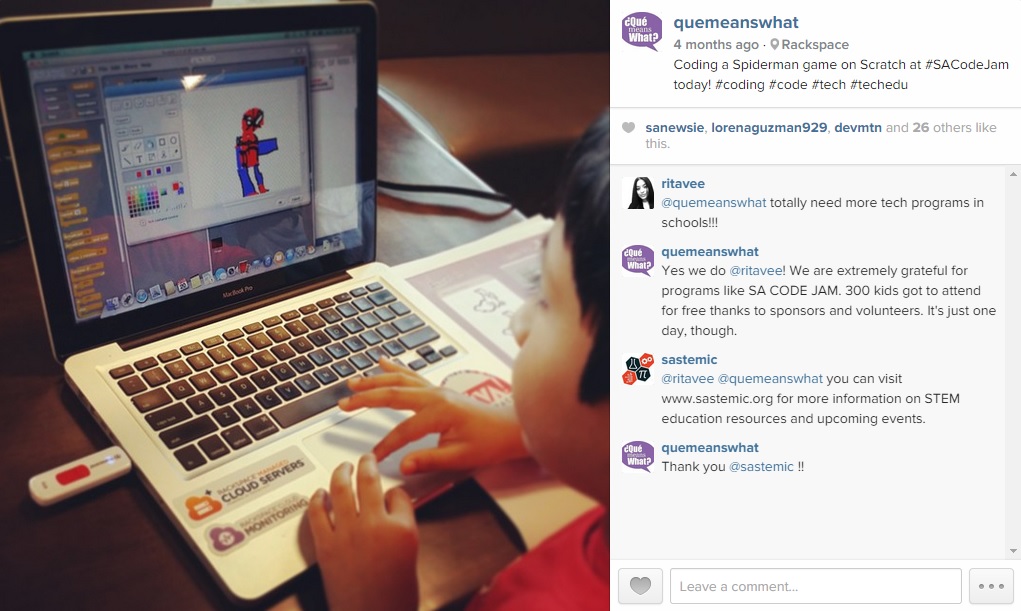This article was sponsored by Massachusetts Mutual Life Insurance Company(MassMutual), Springfield, MA 01111-0001. www.massmutual.com All opinions are those of the author.
Finding the right way teach students money can leave a lasting impact on their lives. MassMutual has teamed up with actor, author and activist Hill Harper to create an energizing and effective way to teach students why they should care about their education, not keep money a taboo subject, and how to save money through the #FutureSmart Program.

We were invited to attend the #FutureSmart Challenge in San Antonio at the home of the San Antonio Spurs, the AT&T Center, along with almost 3,000 middle schoolers from across the city. The energy was high, the music was loud, and the students were excited! The Spurs hype team was there to dance and play games with the students – even the Spurs Coyote made an appearance. Who knew financial literacy could be so fun?! MassMutual and Hill Harper did – that’s who.
Watch my Instagram Stories Highlights from the San Antonio FutureSmart Challenge!
Begin with Education
It’s easy enough to believe that the more you learn, the more you earn. According to the U.S. Department of Labor Bureau of Labor Statistics, it’s true. A person with a college degree can make a salary up to almost 3x’s as much as a person with a high school diploma and a person with a post-graduate degree can earn up to nearly 5x’s as much.

The difference maker is teaching students and their families how to pay for this education. In his presentation, Harper teaches students that college isn’t about one scholarship but applying for multiple. Doing the hard work to apply for numerous scholarships to increase your chances of receiving more money to pay for college is part of taking charge of their lives.
After the event, one student said her key takeaway was learning that there are other options to pay for college and just because her family doesn’t have money does not mean that she cannot get a college degree.
Money and Savings Create Options
Before the event, I had the opportunity to interview Hill Harper. We had a great discussion about saving money which he also shares in each #FututreSmart Challenge.
“Saving is the key,” Harper says.
WATCH the full interview here:
I’ve been victim to the belief that if I’m not saving a significant amount of money at one time, it’s not worth saving any money. Harper reaffirms that putting a little away really does add up. And, if we don’t start saving something even as small as 5%, then we cannot take advantage of making our money work for us like using compounded interest. Harper explains that part of why families can’t begin transgenerational wealth building is because people don’t start to grow savings.
In our interview, Harper asked my sons and me if they saved money. Proudly, we can answer yes to that question. Teaching my kids to save money is one thing I’ve done right as a parent. Ten percent of any money they receive, either from completing chores or when they receive it as a gift, must go into their savings.
Be the Architect of Your Life
When students are giving the tools to begin to design their own life, they are empowered to make the right choices. Harper encourages students to be the architect of their lives and to create a blueprint to guide them through school, work and life.
“Money is simply a tool of life to help you achieve your goals. It’s not neutral. It will help you or hurt you,” Hill Harper says.

Without a plan with established goals, students cannot make the best choices when it comes to money. Harper teaches students about smart money vs. dumb money. Knowing the difference will help students follow their blueprint and adjust accordingly.
For example, if going to college is on your blueprint and you know getting good grades is necessary, is it smart to buy a laptop for your school work? That would depend on how you purchase the computer. Paying cash would be smart money. Using a credit card or a rent-to-own program may be considered dumb money because of the interest.
Five Things to List to Create a Blueprint
- Personal Values
- Career Goals
- Education Goals
- Paying for Education
- Ways to Prepare
Check out the @HillHarper #FutureSmart Twitter feed to see students’ Blueprints!
Teach Money Not Just Math
“In school, they learn math, but they do not learn money,” Harper says. “Money impacts us in so many different ways.”

The #FutureSmart program is helping to bring financial education to middle school and high school students in select cities across the United States. The goal through these events, the #FutureSmart classroom digital curriculums, and the FutureSmart app is to reach 2 million students by 2020.
Students who attend these events will not only learn a new way to think about money but also how to be a leader. Parents are not at these events, so students go home and have conversations with their families about what they learned. After the event, two students shared with me that they believed their parents would be happy and surprised that they learned about financial options for their higher education and about how to save money.
Many students can be leaders in their family and begin a conversation at home about money. With the right tools like the ones provided through the #FutureSmart Program, they can change their families’ financial behavior. That is how you can change a community – one student at a time.
Visit futuresmart.massmutual.com for more information about this program, curriculum for schools and the mobile app.





